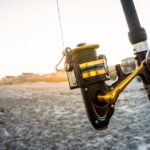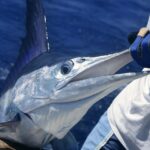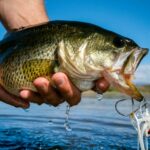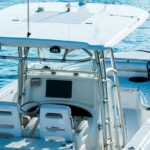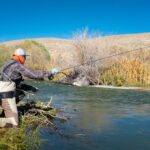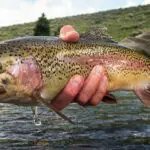One of the age-old questions every saltwater and a good number of freshwater anglers have is whether a tide cycle can increase or decrease fishing catches. Beyond that, they wonder how some anglers can tell what tides work for fishing and what tides do not.
The following is all you need to know about high and low tides, fishing tides and how they affect fishing, and, most importantly, how to read tides for fishing.
What Is a Tide?
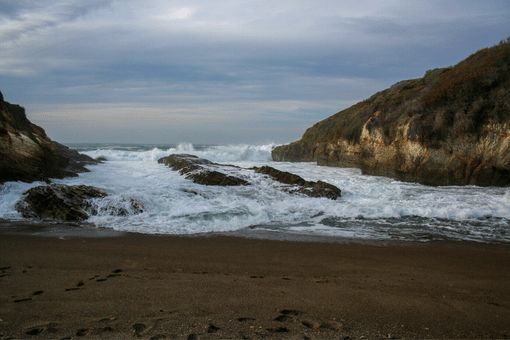
In the simplest terms, tides are the periodic and consistent rise and fall of the sea level caused by the gravitational pull of the sun and moon on the earth’s oceans. With the lowest tides, water levels of the ocean are at their lowest level. At high tide, water levels of the ocean are at their highest.
The ebb and flow of each tide last a little over six hours, making each tidal period a little over 12 hours. The highest point of a tide is during a new or full moon, and when the moon is transitioning, tides head toward their lowest point.
What Causes Tides?
Tides result from the sun and the moon’s gravitational pull on the earth. The moon’s influence is more significant, and it causes tides to fluctuate to a greater degree than the sun’s influence.
Types of Tide
The two basic types of tides are high tide and low tide. Each cycle is a process of water rising or lowering. As soon as a tide’s lowest or highest point is achieved, an incoming or outgoing tide starts. Tides start in the ocean, and the water movement carries them to the shore, influencing bays and inland waterways.
How do Tides Impact Fishing?
Because a low tide or hide tide is simply the movement of water up and down, fishing tides can influence fishing because more movement means fish are more likely to feed. Moreover, tidewater movement prompts many aquatic organisms to become more active, giving fish greater chances to score an easy meal.
The way low and high tides work also influences fishing because of the space available for aquatic life to move during high and low tides. The animals and organisms left in a tidal pool at the beach when the tide starts to lower are good examples of how tides affect an animal’s ability to move. During low tide, if a fish is not careful, it can be trapped in an inlet or river.
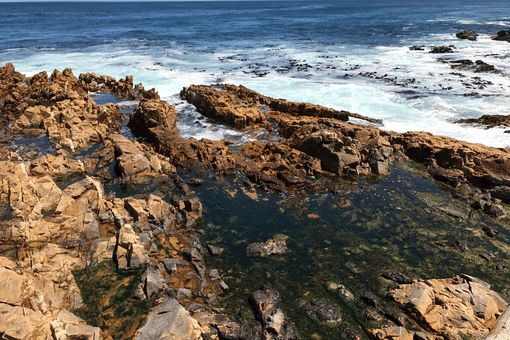
Fish will generally follow the tidal flow. When the tide falls, fish will follow the water as it recedes. During increasing or high tides, fish do the reverse. By planning a fishing trip based on where fish will likely be looking for food, an angler can increase the likelihood that they will put their bait in front of feeding fish.
What Is a Tide Chart?
A tide chart, or tide table, is a dataset that measures the rise and fall of fishing tides. Because tides take about the same time to rise and fall to the highest and lowest points, the flow of water and its average height is easy to track.
In addition, because we understand how tides are affected by the moon, it’s easy to forecast tide ebb current.
Those forecasts make up tide charts.
How To Read a Tide Chart?
How to read a tide chart is easy. However, it is even easier if you can graph the tidal numbers and time, to provide a snapshot of when the tide is high, starts to drain, and hits its low point.
Y-Axis
The Y-Axis charts the height of both tides. The high tide point is the maximum number on the Y-Axis. “0” is the mean low mark. Any data above 0 is a tide that is increasing. Any data less than zero represents an extremely low tide. By charting the Y-Axis, you can map out when the water levels increase and decrease.
You can also tell how high tides are and when a tide will start to head toward its low point.
X-Axis
The X-Axis represents two numbers. First is the time of the day, indicated by the top of the hour (12 p.m., 1 p.m., 2 p.m., etc.) The second number on some tide charts indicates tide times and where a tide is in the process of tidal ebb or flow.
Swell Direction, Height, and Intervals
Affecting the key concepts of high and low tides are the direction of wave swells, height, and frequency (intervals.) Each helps determine the environment the fish is facing as the tide flows in one direction or the other.
All three factors can affect whether fish feed, are active, or seek refuge and stay put. For example, if the ocean or bay has a heavy swell with big waves, the food fish look for will hole up and wait for friendlier conditions.
How To Use the Tide Table for Fishing
Knowing if you are facing low or high tides while fishing can help you catch fish. That requires that you target your fishing trip based on what you see on local tidal charts.
Local Information
Each location is affected by tides differently, even though the general flow of the tide is the same. You can find tide charts that cover every locality that has access to the ocean or a tidal river. In addition, you can find general information on government sites like NOAA.
Select Dates
Where fishing tides fall in relationship to the hours of the day can help you decide when to head out fishing.
Low and High Mark
Documenting the low and high marks of the tide can also help you position yourself. If you know fish push outward at a particular point of a tide and time of the day, you can position yourself at an ambush point where fish must cross as they migrate outward or inward.
Plan Accordingly
Using all this information, you can figure out the best date, time of day, and point in a tide to go fishing, as well as where you most likely will encounter feeding fish. As importantly, you can discern when to avoid fishing and what places to leave alone during any particular point in a tidal flow.
Why Are Tides Important?
Tides are essential for fishing because they can help you figure out where the fish will likely be, where they will be traveling and whether they will be feeding. In addition, knowing where you are in the tidal cycle can help you avoid dangerous tidal currents and getting stranded if you venture up a river searching for migrating fish.
What’s the Best Tide To Catch Fish?
Because baitfish and other fish food move more when the tide is increasing, the fish you will be targeting will be more likely to feed. So, based on that, an increasing tide is better for fishing in general. The second “best time” is when the tide is flowing out, if you can find a choke point that the fish must traverse to keep moving in the same direction.
Fishing Tide Tips
Here are a few tips to help you use tides to your advantage.
Don’t Fight the Current
A general rule for fishing in any tidal-affected area with a current is that the current will slow the rise and quicken the tide’s falling. That can lead fish to avoid specific high-current channels when the tide increases or decreases rapidly. Additionally, during a flood tide, the current can increase the flow of a rising tide and create a dangerous environment for fishing.
Fish Want To Keep Energy
Except when the water temperature is ideal for a particular type of fish to feed, fish tend to try to save energy as much as possible. Because fish try and save energy, it is best to position your fishing location based on the flow of the tide, as the fish will not usually fight against a tide.
Wind vs. Tide
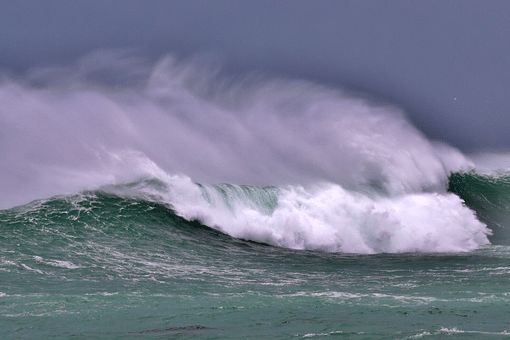
A stiff wind can create a surface tidal flow that works with or against the tidal flow affected by the moon. Often, the wind can push the top of the water in one direction while the current pulls it in another. So, the tide works to push against or with both.
Mixed tides and currents are most often seen during tidal surges when big storms come in, but it can happen any time there are windy conditions.
Learn the Patterns
By learning the tide patterns, fishing conditions during each type of tide, and where they will more than likely move through, you can use the point of the tide and your location to increase your chances of catching fish.
Final Thoughts
A lowering or rising tide can affect the frequency of fish feeding, their location, and their direction. By using tide charts to figure out when fish will likely be moving and in what direction, you can position yourself where your chances of hooking a fish are greater.
- Do You Need An Indicator For Nymph Fishing? - November 16, 2023
- Fishing Safety Tips For Families - September 25, 2023
- What Is The Best Time To Night Fish At A Lake? - September 18, 2023



